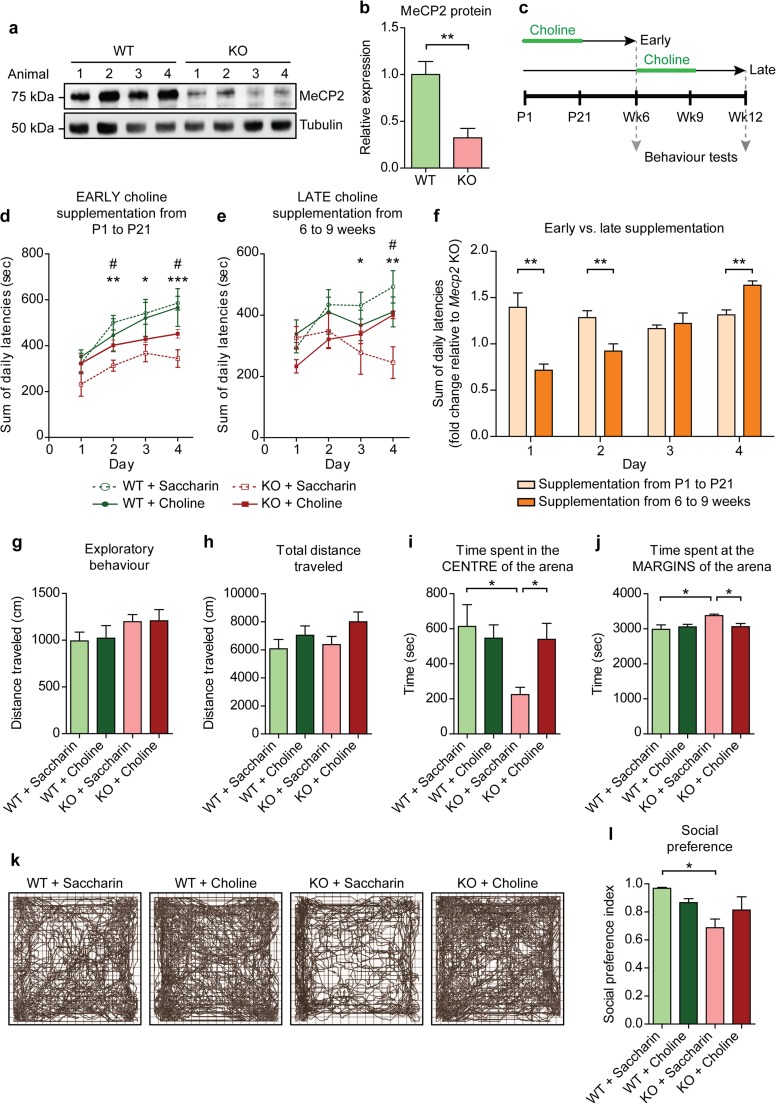Fig. 1.
Choline ameliorates behavioural deficits in a mouse model of RTT a Representative Western blots showing MeCP2 expression in cortical tissue lysates from wild type (WT) and Mecp2-conditional knockout (KO) mice. b Quantification of MeCP2 protein expression from a. n = 4 animals. Student’s t test. c Schedule of choline treatment and behavioural testing. d Mean sum of latencies to fall off an accelerating rotarod from all four trials on each test day by mice supplemented early from P1 to P21 with either vehicle or choline. Asterisk represents comparison between WT + Saccharin and KO + Saccharin, while number sign represents comparison between KO + Saccharin and KO + Choline. e Mean sum of latencies to fall from all four trials on each test day by mice supplemented late from 6 to 9 weeks old with either vehicle or choline. f Comparison of the improvement in the rotarod test relative to vehicle-supplemented KO mice between mice supplemented early and those supplemented late with choline. g Exploratory behaviour of the vehicle- or choline-supplemented WT and KO animals as measured by the distance traveled in the open field test in the first 5 min. h Total distance traveled by the animals in the open field test. i and j Amount of time spent by the animals at the centre i and at the margins j of the open field arena. k Representative traces of the vehicle- or choline-supplemented WT and KO animals in the open field test. l The social preference index is given by the ratio of the amount of time that the subject animal spent interacting with a stranger animal to the total amount of time that the subject spent interacting with both the stranger and an inanimate object. n = 10–13 animals for each condition. All values are presented as mean ± s.e.m. *p < 0.05, ** p < 0.01 and *** p < 0.001. One-way ANOVA with Bonferroni post-hoc

